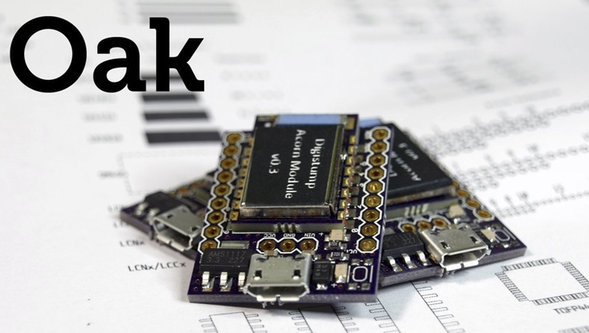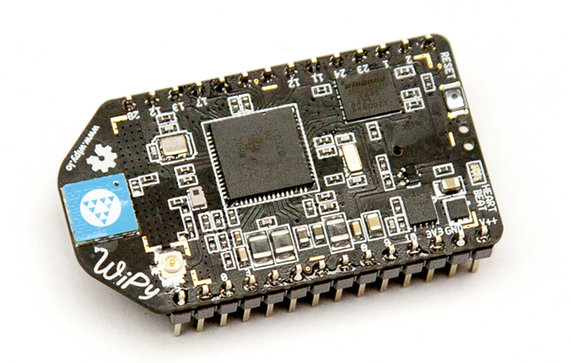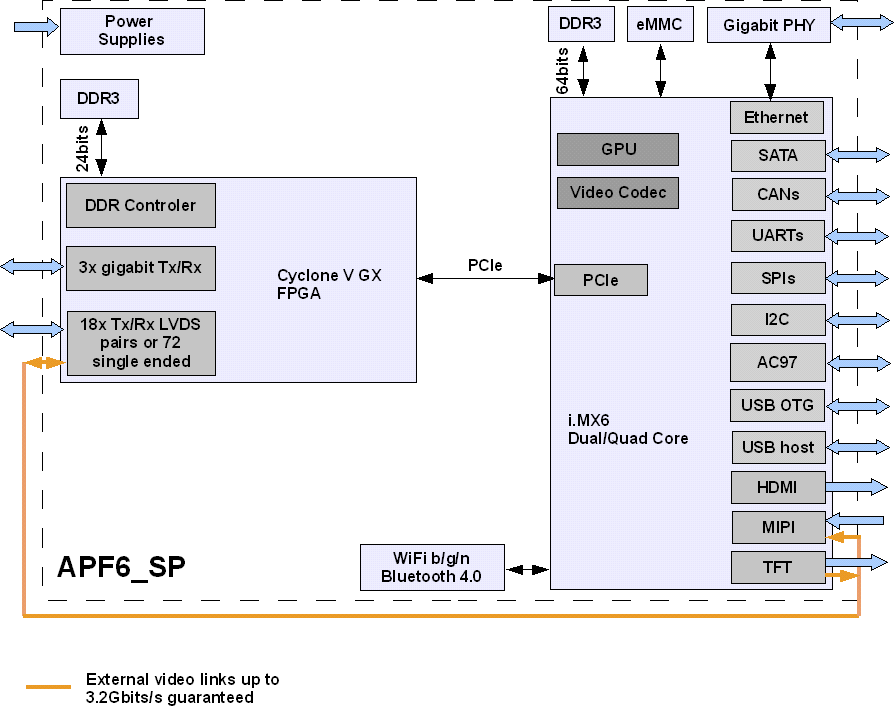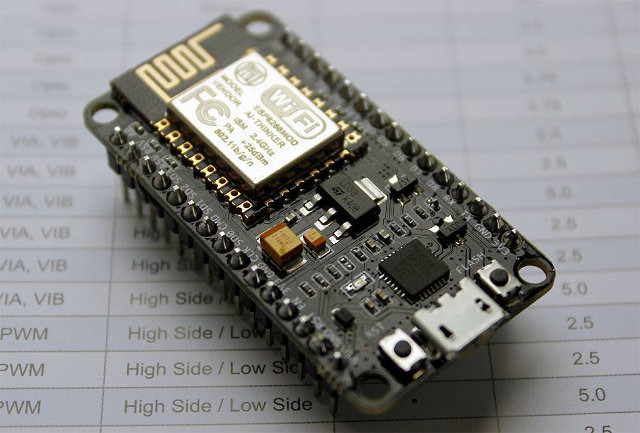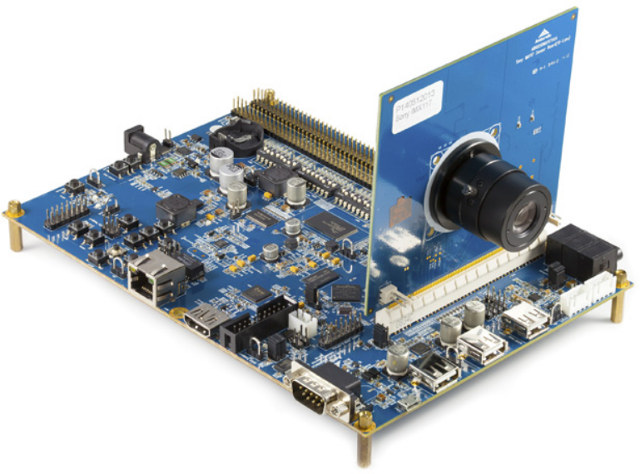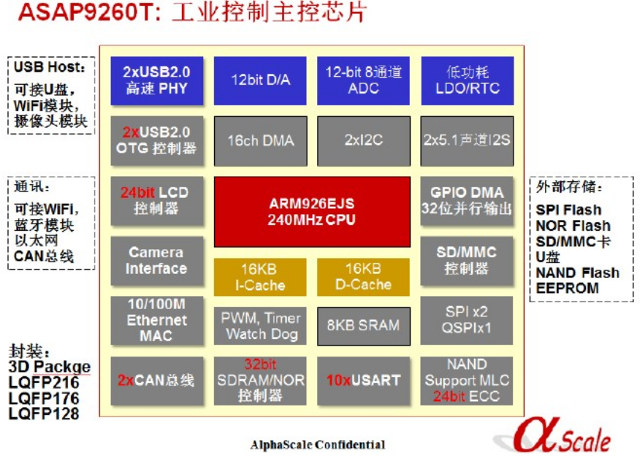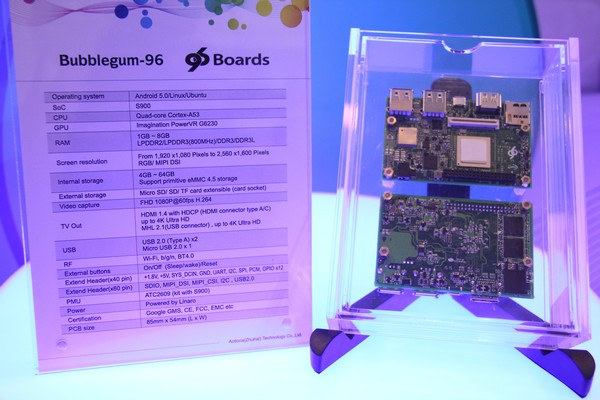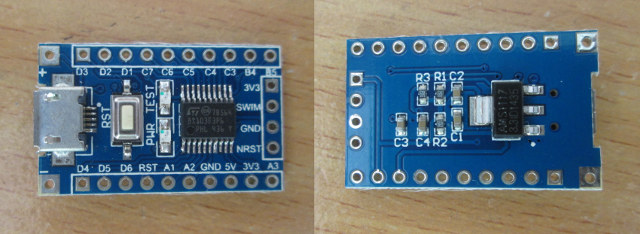A few years ago, I wondered why adding Wi-Fi to Arduino had to be rather expensive ($40+), and why there weren’t any low cost and small form factor Wi-Fi boards for embedded applications. But we’re now in 2015, embedded is “dead” giving rise to IoT, and I’m left wondering how it’s possible to make IoT Wi-Fi modules that cheap, and whether people will ever stop churning out cheap Wi-Fi boards, as I’m flooded with such news weekly… So when I saw yet another ESP8266 board on Kickstarter I was about to dismiss it, but since it was made by Digistump, that has an active community with their other products like DigiSpark Pro or DigiX, I decided to have a closer look. Digistump Oak hardware specifications: MCU – Espressif ESP8266EX 32-bit microprocessor @ 80MHz (overclockable up to 160MHz) with 1MB ROM (~300KB available for user code), 64KB RAM, 512 bytes EEPROM […]
WiPy Wi-Fi Board for IoT Runs MicroPython on Texas Instruments CC3200 (Crowdfunding)
If you’ve interested in connecting devices via Wi-Fi, you’re being spoiled as “Internet of things” boards keeps getting designed and produced. The latest board with WiPy, a small board powered by Texas Instruments CC3200, running MicroPython, and consuming less than 1mA in suspended mode with Wi-Fi connected. WiPy specifications: MCU – TI CC3200 ARM Cortex-M4 @ 80 MHz with 256KB RAM, Wi-Fi and TCP/IP stack Storage – 2MB flash Connectivity – WiFi 802.11b/g/n 16Mbps (AP, Station and WiFi-Direct), on-board antenna and u.FL connector Expansion – 2x 14-pin headers (2.54mm pitch) with Up to 25 GPIOs 2x UART, SPI, I2C, I2S, and SD card 3×12 bit ADCs Others 4×16 bit timers with PWM and input capture RTC Hash and encryption engines: SHA, MD5, DES, AES Reset switch, heartbeat LED Power Supply – 3.6 – 5.5V DC input; 3.3V output up to 250mA Power Consumption – Active: 14 mA; Suspended (Wi-Fi connected): […]
Armadeus Systems APF6_SP SoM Combines Freescale i.MX6 Processor and Altera Cyclone V GX FPGA
Xilinx Zynq and Altera Cyclone V are both SoC families combining an ARM processor (Hard Processor System – HPS) with FPGA fabric into a single chip. But Armadeus Systems, a French company designing industrial ARM Linux processor modules, has unveiled a new module where the CPU and FPGA are two separate chips, namely Freescale i.MX6 (single to quad) and Altera Cyclone V GX FPGA, in order to provide more flexibility, and extra features like a GPU with OpenCL support, an hardware video processing unit, a dedicated SATA port, and so on. Armadeus APF6_SP SoM specifications: SoC – Freescale i.MX6 single, dual or quad core Cortex A9 processor with Vivante GPUs FPGA – Altera Cyclone V GX (C4/C5/C7/C9) System Memory 512MB to 1GB DDR3 32-bit @ 800 MHz for i.MX6 Solo or Duallite 512MB to 2GB DDR3 64-bit @ 1066MHz for i.MX6 Dual or Quad Optional up to 768MB RAM dedicated […]
NodeMCU is both a Breadboard-Friendly ESP8266 Wi-Fi Board and a LUA based Firmware
NodeMCU is a LUA based interactive firmware for Expressif ESP8622 Wi-Fi SoC, as well as an open source hardware board that contrary to the $3 ESP8266 Wi-Fi modules includes a CP2102 TTL to USB chip for programming and debugging, is breadboard-friendly, and can simply be powered via its micro USB port. Let’s checkout the hardware first. The latest version of the board (V1.0) has the following specifications and features: Wi-Fi Module – ESP-12E module similar to ESP-12 module but with 6 extra GPIOs. USB – micro USB port for power, programming and debugging Headers – 2x 2.54mm 15-pin header with access to GPIOs, SPI, UART, ADC, and power pins Misc – Reset and Flash buttons Power – 5V via micro USB port Dimensions – 49 x 24.5 x 13mm The hardware documentation for the board can be found on nodemcu-devkit repo, including schematics and PCB layout designed with Altium Designer, […]
Ambarella Unveils SL2m IP Camera Reference Design Promising up to 6 Months of Battery Life
Ambarella S2Lm IP Camera SoC features a Cortex A9 CPU core, encodes video with H.264 up to 3Mp30 / 1080p30, and targets consumer and entry-level IP Camera designs. The company recently launched a new battery-powered IP camera reference design based on the solution that promises up to 6 months battery life, and can record Full HD video in less than 500ms from wake up, making ideal for battery operated security cameras. A Linux SDK is also provided with reference implementations for low-power standby operation, wake-on-Wi-Fi and fast boot to Linux. Unfortunately, that’s about all we know about the reference design, so instead I’ll have a look at the processor, and SL2m IP camera evaluation board. Ambarella SL2m SoC specifications: CPU – ARM Cortex-A9 processor with 32KB/32KB I/D and 128 KB L2 Cache, NEON and FPU, Crypto Engine – AES/3/DES/SHA-1/MD5 DSP / VPU – Ambarella Image and Video DSPs Sensor and […]
AlphaScale ASM9260 ARM9 Processor Details and Development Board
Yesterday, as I wrote a Linux 4.0 Changelog, I noticed a new ARM processor called AlphaScale ASM9260, and I thought it might be interesting to find out more. A Google search would only return results from the Linux kernel mailing list and mirrors, so I checked out the code a bit to find out its an ARM9 processor made by AlphaScale Integrated Circuits Systems, Inc, based in Wuxi, China. The company website alphascale.com does not work, but I found out the processor is sold on Taobao for 38 RMB (~$6), and there’s also a development board (ASM9260DVK) for 498 RMB or about $80, and that’s basically the only two links were I could find any details. AlphaScale ASM9260T is arm ARM926EJS processor clocked at 240 MHz, 16GN I-cache and D-cache, 8KB SRAM, with the following peripherals: 32-bit SDRAM/NOR interface MLC NAND 24-bit ECC 2x USB 2.0 OTG, 2x USB 2.0 […]
Bubblegum-96 Development Board Complies with 96Boards, Features Actions Semi S900 64-bit ARM Processor
We’ve already have two 96Boards compliant boards formally announced with HiSilicon Hikey and Qualcomm Dragonboard 410c, and Actions Semiconductor was also expected to release theirs soon. Albeit it’s not been officially announced yet, the company has been showcasing their Bubblegum-96 board at the Hong Kong Electronics Fair 2015. Bubblegum-96 development board specifications: SoC – Actions Semi S900 quad core Cortex A53 with PowerVR G6230 GPU System Memory – 1 to 8GB LPDDR2 / LPDDR3(800MHz) / DDR3 or DDR3L Storage – 4 to 64 GB eMMC 4.5 flash + micro SD slot Video Output – HDMI 1.4 with HDCP up to 4K, MHL 2.1 up to 4K Connectivity – Wi-Fi 802.11 b/g/n, Bluetooth 4.0 USB – 2x USB 2.0 ports, 1x micro USB 2.0 port Expansion 40-pin LS (Low Speed) Expansion connector – UART, I2C, 12x GPIOs, SPI, PCM, 1.8V, +5V, GND… 64-pin HS (High Speed) Expansion connector – DSI, CSI, […]
How to Program STMicro STM8S $1 Board in Linux
In January, I discovered there was such thing as a one dollar development board based on STMicro STM8S103F3P6 8-bit MCU with 1KB SRAM, 8KB flash, and 640 bytes EEPROM, some GPIOs as well as I2C, UART, SPI, ADC, and PWM signals. Links to documentation and source code were provided, but development tools were only Windows based. However, one of my reader informed me SDCC (Small Devices C Compiler) supported STM8, and development in Linux should be feasible. So I decided to buy the board on eBay for $1.62, as well as an ST_link V2 programmer for STM8 / STM32 for $4.52 in order to flash the firmware. The board came pretty quickly, i.e. within 2 to 3 weeks. But due to a lost package, the programmer took nearly 3 months to reach me, as the seller had to re-send after I failed to receive it within 2 months. It comes […]


